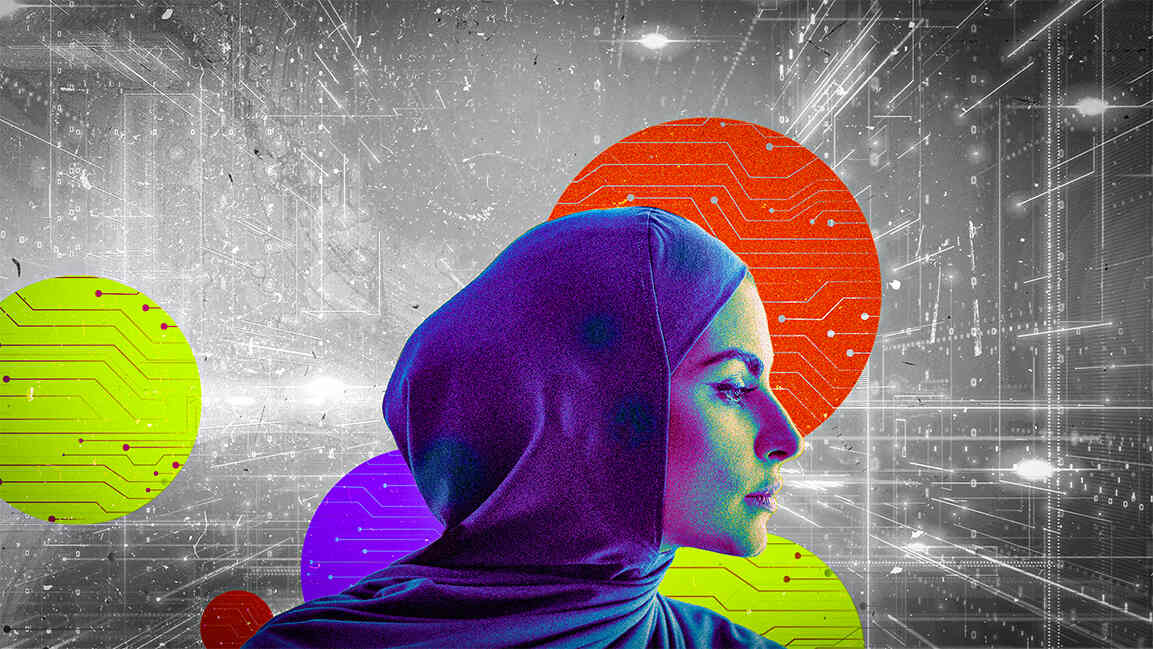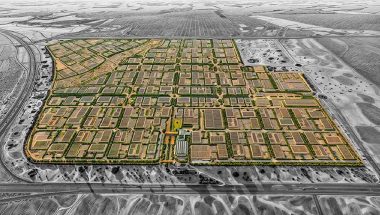- | 9:00 am
Bridging the gap: How Saudi Arabia is empowering women in AI
Saudi Arabia ranks first globally for empowering women in the AI sector through national initiatives, global collaborations, and startup investments.

Saudi Arabia aims to be a leader in artificial intelligence (AI) as it gains recognition for technological progress and innovation.
According to the AI Index Report 2025 by Stanford University’s Institute for Human-Centered Artificial Intelligence, the kingdom ranks third worldwide in AI job growth for 2024 and fourth in the number of leading AI models, placing it alongside global tech powerhouses such as the United States, China, France, Canada, and South Korea.
But where Saudi Arabia unexpectedly excels the most is in female inclusion in AI. The report ranks the kingdom first globally for empowering women in the field, based on the female-to-male ratio, which is achieved through efforts that include advanced training programs and professional development opportunities in the tech sector.
MAIN DRIVERS FOR FEMALE INCLUSION
Dr. Latifah Almuqren, AI Consultant at Apple Developer Academy and Assistant Professor at the Princess Nourah bint Abdulrahman University, attributes the progress made to the kingdom’s Vision 2030, which placed a strong emphasis on building a knowledge-based economy and unleashing the full potential of all citizens, especially women.
“Initiatives from entities like SDAIA, the Ministry of Communications, and various academic institutions have created structured pathways for women to lead in AI. We are no longer just participating; we are designing solutions, leading research, and shaping policy.”
Almurqen shares her personal experience of being given opportunities to lead national AI initiatives and represent Saudi talent at global forums, “something unimaginable a decade ago. ”
Derar Saifan, Technology Consulting Partner at PwC Middle East, highlights SDAIA’s Elevate program with Google Cloud as a key initiative to train 25,000 Saudi women in AI and cloud technologies and points to the role of institutions such as the Saudi Digital Academy and the Misk Foundation in creating robust talent pipelines and equipping women with skills for technical roles in data science, machine learning, and digital innovation.
“These are not just training programs. They are reshaping career pathways and workplace norms to enable women to contribute to national development. The result is clear: more women are not only entering AI but also publishing research, building products, and leading teams.”
WOMEN IN STEM FIELDS
Generally, women have been less likely to pursue majors in science, technology, engineering, and mathematics (STEM), often held back by social norms, biases and expectations that influence both the quality of education they receive and the subjects they choose to study.
According to UNESCO, women remain significantly underrepresented in STEM education, accounting for only 35% of STEM graduates—a figure that has remained unchanged for the past decade—and, as a result, are also underrepresented in STEM careers.
Saudi Arabia is actively working to reverse this trend. Kaida Ibrahim, Linguaskill Testing Center Manager at Princess Nourah Bint Abdulrahman University, says the kingdom has embraced a multi-pronged strategy to encourage female participation in STEM. “This includes scholarships, mentorship initiatives, and investments in startups, along with the creation of STEM-focused institutions and national competitions,” she explains.
International collaboration is also central to this strategy. “Partnering with tech giants, universities, and non-profits offers Saudi women access to world-class training, resources, and networks,” Ibrahim adds.
Razan Almuqren, a technology mentor, points to national platforms such as the Saudi Digital Academy and Misk Foundation, which drive female inclusion through equal access to cutting-edge tools, certifications, and global partnerships.
“What sets Saudi apart is not just access, but targeted programs designed with female empowerment in mind, offering flexible formats, female instructors, and mentorship circles,” she says.
Dr. Luluh Aldhubayi, Director of King Saud University’s AI Center, says Saudi Arabia is advancing women’s participation in AI through efforts spanning education to employment. Today, 59% of computer science students in Saudi universities are female—among the highest rates globally.
“These efforts are complemented by startup accelerators, hackathons, and global partnerships that expose Saudi women to entrepreneurship, product development, and AI research. It’s not just about getting women into STEM, but it’s about equipping them to thrive and lead.”
Almuqren has seen firsthand how these efforts are inspiring young women. “As someone who mentors young Saudi women, I’ve seen how these initiatives ignite passion and ambition. These steps are not just closing the gender gap but building a future where Saudi women lead innovation.”
Saifan notes the impact of initiatives like Saudi Codes, which have introduced digital skills on a large scale, including widespread participation from women. “In higher education, women now represent 38% of STEM graduates in the kingdom, ahead of the global average,” he says.
He points to the Apple Developer Academy in Riyadh, which has trained nearly 2,000 women in app development and entrepreneurship at Princess Nourah University. One standout project, My Child, created by Jawaher Al-Enezi, was named a top-three global entry in Apple’s Swift Student Challenge.
Supporting such progress are policy reforms that introduced gender-neutral laws, anti-discrimination protections, and flexible work models—opening more doors for women in tech leadership.
Meanwhile, Tuwaiq Academy has hosted over 160 boot camps in AI, cybersecurity, and data science, many with women-focused tracks. Nationally, SDAIA’s SAMAI initiative aims to train one million Saudis in AI, reinforcing the kingdom’s push for inclusive digital growth.
CHALLENGES HINDERING PROGRESS
“Despite the remarkable strides made in empowering women in AI, challenges still exist, mainly at the intersection of personal expectations and the rapid pace of professional growth,” says Almuqren.
She explains that many Saudi women, including herself, often have to navigate balancing high-performing technical roles with traditional responsibilities outside of work. “In a field like AI, where innovation moves fast, and constant learning is required, this dual commitment can become overwhelming without the right support systems.”
Going into more detail about the factors holding women in the field back, starting with algorithmic bias, which can negatively impact women during the hiring process, Ibrahim says that women-led SMEs tend to face funding gaps, high market competition, and low access to capital.
Saifan adds that while women’s participation deepens, their representation in specialized and senior AI roles remains relatively limited.
“This highlights the importance of structured entry points, ongoing mentorship, professional development pathways that support sustained career growth, and a focus on overcoming cultural and societal expectations that may hinder women from assuming leadership positions in general.”
Similarly, Aldhubayi also stresses the need to increase female representation in senior leadership and decision-making roles, including executive positions and AI policy development.
She further advocates for a broader view of AI as an interdisciplinary field, intersecting with areas like healthcare, education, ethics, and language. “We can attract even more women from diverse academic and professional backgrounds.”
FEMALE INCLUSION AND BROADER GOALS
Abdullah Yahya, a robotics engineer at Alfanar, says women’s inclusion boosts innovation, strengthens the digital economy, and attracts investment. “Diverse teams deliver better results—I’ve seen that firsthand. Empowering women in AI isn’t just the right thing to do; it’s smart economics.”
Saudi Arabia is rapidly becoming a global player in AI, hosting world-class summits, building tech hubs, and developing top talent, including women. In the coming years, Yahya says, “The kingdom will lead in ethical, inclusive AI and set an example for empowering women in future technology leadership.”
Aldhubayi emphasizes AI’s expanding role, central to the growth of smart cities, health, education, cybersecurity, and sustainability and more. “Women are now part of the teams building those solutions. Every woman trained and employed in AI contributes not only to her own success but to the Kingdom’s competitiveness in a global digital economy.” She explains.
Economically, she notes, greater female participation in AI enhances productivity, bridges skills gaps, and enriches the innovation landscape. Socially, it ensures more inclusive technologies, especially for Arabic-speaking users. “Simply put, women in AI accelerate Saudi Arabia’s transition from an oil economy to a knowledge- and innovation-based economy.”
According to Almuqren, the kingdom is creating a more resilient, inclusive, and innovative tech economy by unlocking the potential of half the population. “I’ve seen how women-led AI solutions in health, education, and smart cities reflect technical excellence and cultural relevance.”
She adds Saudi Arabia’s support for women in AI is a strategic asset for long-term growth and global competitiveness. “Saudi women will be central to shaping AI regulations, driving breakthroughs in Arabic natural language processing, and developing ethical frameworks that reflect our values.”
According to Monsha’at, as of January 2023, women lead 45% of small and medium-sized enterprises across Saudi Arabia. Their representation in the information technology sector has also surged—from 11% in 2017 to 24% in 2021—exceeding Silicon Valley’s average by 8%.
“This growth in female-led tech startups and SMEs is not only a sign of progress. It is a vital engine of diversification and private sector innovation,” Saifan says.
A report on AI’s potential impact in the Middle East estimates the technology could contribute over $135 billion to Saudi Arabia’s GDP by 2030—roughly 12.4% of total output.
“Realising that potential depends on developing a skilled, diverse, and inclusive workforce. When women are part of AI design, development, and deployment, outcomes improve,” Saifan adds.
He also highlights the kingdom’s strategic partnerships with global tech giants, including Nvidia, Microsoft, and OpenAI. In May, Saudi Arabia launched Humain—a national AI initiative focused on developing large-scale Arabic-language models and foundational technologies for both local and international markets.
“What continues to distinguish Saudi Arabia’s approach is its emphasis on inclusivity alongside innovation,” Saifan adds.“Women are taking on pivotal roles in the AI ecosystem, not only as engineers and researchers, but also as founders, policymakers, and technology leaders.”







































